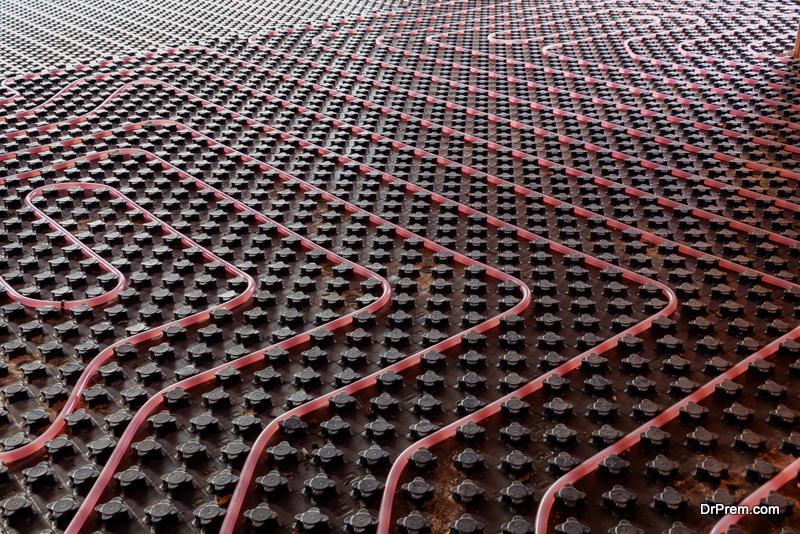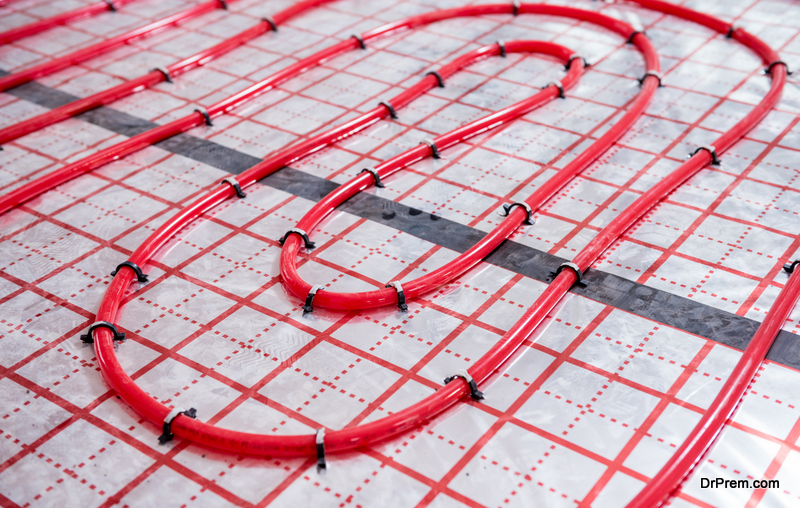There are several advantages to using this floor heating system, which may also be used as supplementary or whole-home heating. Other air conditioners, including radiators or baseboard heaters, can be substituted with an in-floor heat boiler. Both residential and commercial locations are suitable for the usage of in-floor heating. Additionally, it uses less energy than other kinds of heating systems.
Here’s a list of advantages and drawbacks of floor heating water heaters so you can decide which heating system is ideal.
Advantages
1. Simple Operation
Since a thermostat may be used to manage it, radiant floor heating is simple. Temperature and time may be adjusted at the touch of a button, much like a furnace. They are even more user-friendly since they work with intelligent WiFi thermostats. They frequently have a 30-year warranty and require almost no maintenance.
2. Efficient
The optimal operating temperature for conventional radiators is between 149 and 167 degrees Fahrenheit. Only 84 degrees Fahrenheit is needed for floor heating systems to function. They can assist in bringing down the price of your energy bills because they use less energy. Due to their effectiveness, electric radiant floor heating systems often save heating costs by 15%.
3. Safe
Radiant floor heating is secure, unlike conventional radiators. Say goodbye to stressing over hot surfaces or sharp edges that might harm family pets or small children. You won’t need to worry because the radiant heating system is concealed beneath the floorboards. Moreover, your home’s quality of air will be much improved. There is no air circulation in your home since you get heat from the flooring. This implies that it maintains the air clean and full of oxygen.
4. Space-Saving
Traditional radiators would have taken up the room, but radiant floor heating is installed beneath your flooring, freeing up that area. There will be more room for decoration and empty walls.
Drawbacks

1. Replaced floors are required
The existing flooring must be taken out to implement floor heating. This entails removing every piece of furniture from space before replacing it all after the installation is complete. This might make the system installation take longer, in addition to being tiresome, and because of this, installing these systems is best done during a house renovation or building project.
2. Very High Floors
When installing an electric radiant floor heating system, your floor’s height usually changes. This is because they are often built with insulating boards to enhance heat retention, measuring around 12 inches or less, depending on the system. These planks often increase the height by an inch. Underfloor heating systems may also dramatically improve the floor height.
3. Expensive To Install
Installation costs for radiant floor heating systems can be high. Typically, they run between $10 and $20 per square foot of heating. In addition, an electrician may be needed to connect the system to a power source, which appears to be a major to $200. You may spend more than $500 overall. Two to three times as much as a power system, water-based systems are more expensive.
In conclusion, the above are the highlights and drawbacks.
Article Submitted By Community Writer




